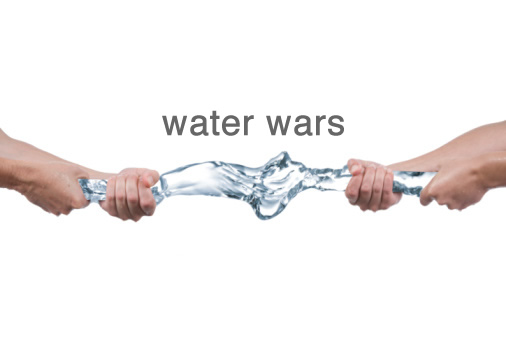It must be recognised that sometimes, the smart choice is to
retreat, rather than fighting against the odds. In Africa and Sub-Saharan
Africa, rural out-migration has been a trend for decades, as families send
members to cities in search of work and supplementary income. Other families
have moved entirely, because of expectations of better prospects and
livelihoods.
Previously, migration has been driven more
by war and economic hardship, but in the face of climate change and increasing
difficulty in growing crops, many security-minded academics, think tanks, and
countries expect climate migrants, or even climate
refugees to increase in number. These migrations will occur not only in
Africa, but in India and Africa, contributing to geopolitical, economic and
cultural tensions.
In Ghana and Nigeria, there is moderate evidence that crop
losses in bad weather encourages out-migration of rural farmers, as compared to
rural families not engaged primarily in farming. Migration does not have to be
rural-urban either; some farmers in Ghana have chosen to move to wetter areas
in the south of their country to re-establish their livelihoods as farmers.
Of course, migration is never easy or
cheap. In the Ghanaian and Nigerian cases, migration is often a considered
after less costly and risky farming adaptations have already been tried, such
as diversification of income.
The same study is extremely interesting to me, because it cited another study which highlights a paradox. Ironically, the poorest families who suffer the most from crop failures and water scarcity cannot afford to migrate or send any person out to work. Migration is undertaken by relatively better-off families, while the poorest are stuck in a poverty trap. Climate change induced crop failures will understandably reduce the wealth and capital of families, putting more poor farmers into this poverty trap.
How does migration fare as an option in
the eyes of aid organisations or national policy? Collier and Dercon in a recent review of the African
smallholder farming situation briefly mention that migration is a viable
solution to helping smallholders, but is ill supported policy wise. Other
adaptations are much better promoted and supported in Africa to combat poverty,
meaning that migrants take on all costs and risks by themselves.
One reason I can offer for this is that
migration is not an end, but a means. A policy that promotes migration for its
own sake cannot solve the problems of poverty, but merely transplant problems
elsewhere into already congested urban areas. I imagine that this is not a
scenario that policy makers want to play out.
I think this short post about migration as
an adaptation to water scarcity rounds up the adaptations to water scarcity series
nicely. While migration does not technically combat water scarcity, it managed
to avoid the problem. Sometimes it also is the most sensible and least-painful
option for poor and water-stressed farmers.
Stay starchy,
Mr. Cassava
